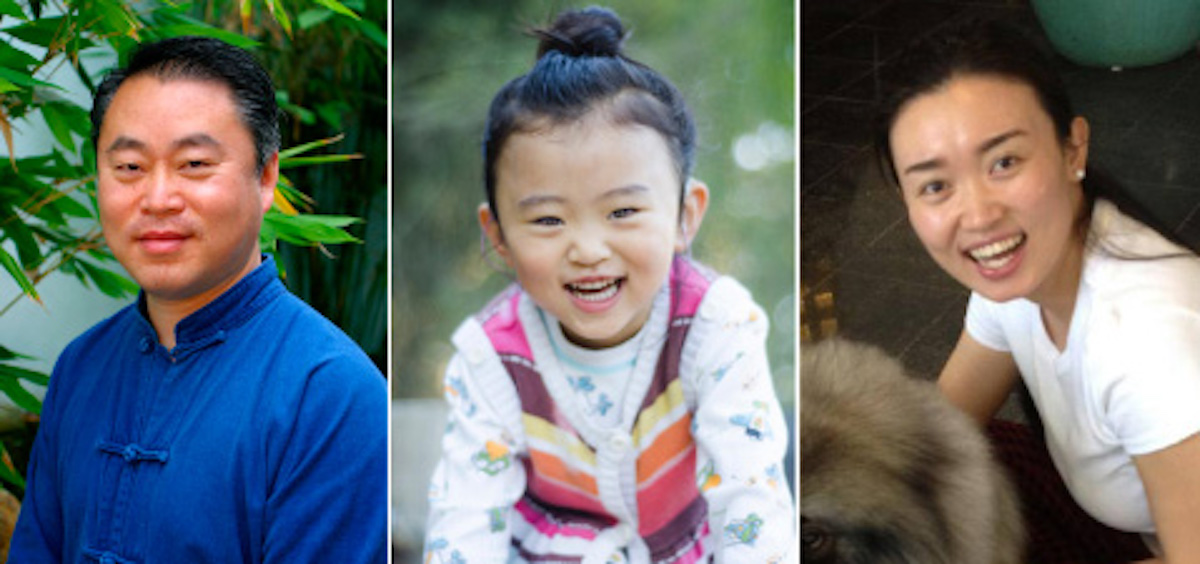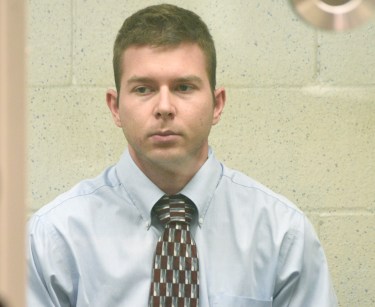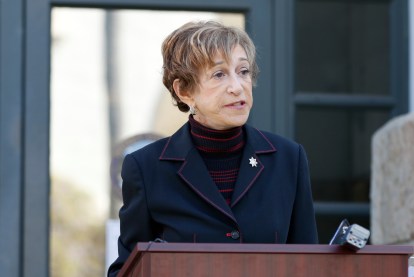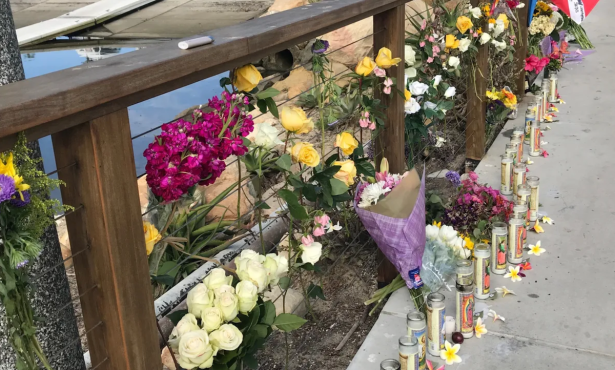Santa Barbara DA Drops Bid for Death Penalty in Han Family Murder Case
In Exchange, Triple Homicide Defendant Agrees to Trial by Judge Instead of Jury

In her 11 years as Santa Barbara’s District Attorney, Joyce Dudley has only sought the death penalty once, and that was against Pierre Haobsh, now facing trial for the triple homicide of noted herbal doctor Weidong “Henry” Han, 57; his wife, Huijie “Jennie” Yu, 29; and their daughter, Emily, age 5, in March 2016. This week, in Judge Brian Hill’s courtroom, Dudley and two prosecutors — Benjamin Ladinig and Hilary Dozer — agreed to drop the death penalty enhancements against Haobsh, 27 years old at the time of the killings. In exchange, Haobsh agreed to waive his right to a jury trial; Judge Hill will act not just as judge but as jury.

As details of the case emerged — of bodies wrapped up in tarps and wrapped with duct tape, of all three victims shot to death in the beds of their Goleta home, and of the daughter shot multiple times in the face — Haobsh would emerge as the poster child for death penalty supporters: an allegedly creepy, calculating killer motivated by greed and profit.
If Judge Hill finds Haobsh guilty, he’ll be sentenced to three terms of life without the possibility of parole. In addition, Haobsh and his attorneys — Christine Voss and Michael Manley with the Public Defender’s office — agreed to allow prosecutors to introduce pretty much all of the evidence and testimony presented during the 2017 preliminary hearing entered as evidence without opposition. Even hearsay evidence presented during the prelim will be allowed without challenge. In fact, Haobsh agreed to terms stipulating that “the preliminary hearing transcripts can be accepted by the court as part of the factual basis for any verdict or finding by the court.”
In the five years since the killing, Haobsh, an Oceanside resident with a murky past and even murkier association, has been held in Santa Barbara County Jail.
Han was not just an admired herbalist, but a beloved one. His murder had a powerful and immediate impact on thousands of current and former patients throughout the South Coast, many of whom have been demanding in the intervening years: What’s taking so long?
Haobsh, who is reportedly both competent and sane, clearly had no interest in anything but delay. The mountain of evidence — videotapes, text messages, emails, video search records, testimony of witnesses, possession of the Hans’ cell phones, the match between the gun found on his possession and the bullets found in the victims — presented against him at the preliminary hearing was damning in the extreme.
Coroner’s images of the victims — especially the young girl — were emotionally devastating.
Sign up for Indy Today to receive fresh news from Independent.com, in your inbox, every morning.
Not much is known about Haobsh. He is reportedly highly intelligent, as well as socially awkward and inappropriate, especially with women. He reportedly had been a lab technician in San Diego working on a project launched by Han to develop a new genetically based skin cream using cannabis oils that would function not merely to repair or mask skin damage, but to rejuvenate it. Likewise, Haobsh was reportedly a partner with Han on another project to create an anti-cancer medication relying heavily on cannabis. Haobsh reportedly believed Han was much richer than he actually was and killed him as part of a plan to transfer all the funds in Han’s bank accounts into his own and flee to Mexico, where he reportedly intended to find a Russian bride.

Haobsh was an inviting riddle, utterly blank-faced during the preliminary hearing and his multiple court appearances. His father was reported to have had ties with the CIA. His sister presented herself as an accomplished social influencer. Those looking for darker conspiracy theories lurking in the background will perhaps be disappointed.
Although all parties involved are bound by strict gag orders not to speak, the DA’s decision to drop the death penalty was driven by the COVID outbreak and the serious log jam it inflicted on the criminal court calendar. Death-penalty cases are notoriously labor-intensive to try, as they involve not one trial but two: the first for guilt, the second for death. Finding 12 jurors in Santa Barbara’s solidly blue south willing to impose the death penalty would be time-consuming. Two thousand juror summons were slated to be mailed out. Given the avalanche of evidence and the skill of all attorneys involved, the case would have imposed a serious drain on the court’s COVID-limited resources.
Given California’s stubborn legal and political realities, it’s seriously questionable Haobsh ever would have been executed. Last year, Governor Gavin Newsom imposed an official moratorium on any executions, vowing not to sign any execution warrants as long as he’s governor. But even if Newsom were to be recalled in this year’s September 14 election, there’s little reason to expect the death row machinery would get rolling any time soon. Santa Barbara County now has seven inmates on death row, the longest on death row being Malcolm Robbins, who was sentenced to death in 1983.
Support the Santa Barbara Independent through a long-term or a single contribution.




You must be logged in to post a comment.